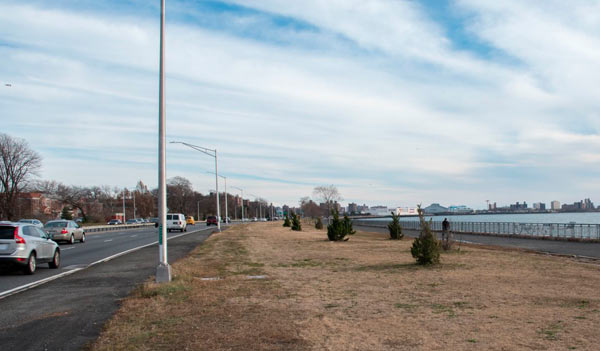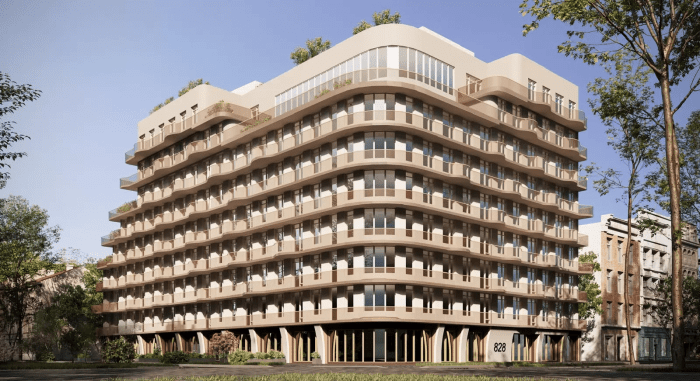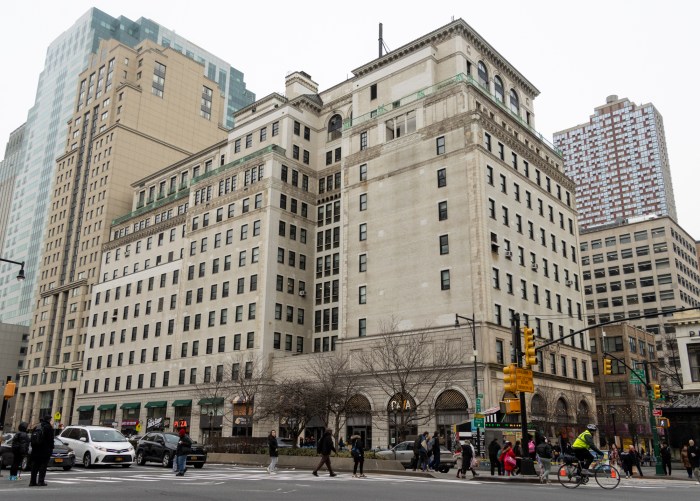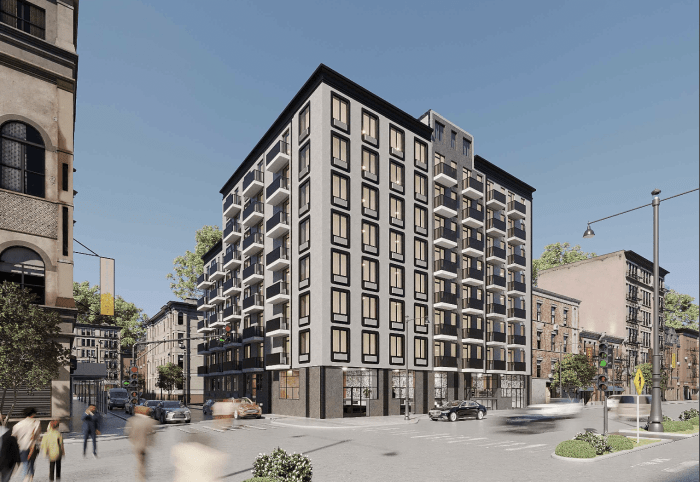The city is still ignoring Southern Brooklynites’ calls to make the Shore Road and Gravesend Bay promenades safer for pedestrians by installing guard rails along an unprotected stretch of the Belt Parkway that runs parallel to the walkways, even as the mayor announced on Jan. 2 that the city would invest $50 million to install 1,500 bollards at locations across the five boroughs, according to community leaders and local pols.
Rock-to-Ridge Rep. Dan Donovan (R–Bay Ridge) sent a letter to Police Commissioner James O’Neill on Nov. 13 asking the department to specifically assess the vulnerabilities on the 1.15-mile unprotected strip of the waterside pedestrian path — between exits four and five, from Bay Eighth Street to Bay Parkway. But O’Neill responded — nearly a month later — by saying that he directed the department to install steel bollards at the entrance to the bike path at the troubled 69th Street Pier — more than three miles away from the area Donovan asked about.
The district manager of Community Board 11, which has been lobbying the city to instal guardrails in the area for the past two years, said that the move is largely symbolic and will do little to better protect the space which she and others worry could become a target for truck-driving terrorists or even distracted drivers.
“While bollards are good for the entrance, cars can easily access the promenade just by driving over the grass — whether accidental or intentional — and that needs to be looked at immediately,” said Marnee Elias-Pavia. “It’s common sense.”
Guardrails are currently in place to separate the promenade from the thoroughfare along the strip west of Bay Eighth Street, but there are no protections for the part that runs east to Bay Parkway. But Commissioner O’Neill said in his response to Donovan that the Parks department conducted a survey of the entire Shore Road pedestrian promenade — from the pier to Bay Parkway — on Nov. 15 with personnel from the 62nd and 68th precincts, which a spokeswoman from the Parks Department confirmed, and that it determined the only need was for bollards at the bike path entryway — which is approximately 3.3 miles away from exit four, where the unprotected part of the promenade begins.
The spokeswoman from the Parks Department said that the site survey determined that the city should also install bollards at the Bay Parkway entrance to the bike path, as well as at the Belt Parkway on-ramp at Fourth Avenue, and that the officials identified places were existing guard rails could be improved or repaired. But none of those proposed solutions explicitly protect the strip of the pedestrian promenade that runs adjacent to the Belt Parkway unprotected by guardrails — the fix that Donovan explicitly requested in his letter.
The Parks spokeswoman said that the plans have not even been finalized yet, so the department does not have a timeline on installation.
A spokeswoman for Donovan said that he trusts the police department’s anti-terrorism personnel to decide what type of security measures are best for the area given their expertise and unique understanding of the steps that have to be taken to address threats.
Councilman Mark Treyger (D–Coney Island) sent a Nov. 28 letter to the Department of Transportation with former councilman Vincent Gentile (D–Bay Ridge) asking the city to install the guardrails along the unprotected stretch. But Treyger renewed his call for the city to act to protect the promenade — as well as the Riegelmann Boardwalk — with councilmen Chaim Deutsch (D–Sheepshead Bay) and Justin Brannan (D–Bay Ridge) following the city’s response to Donovan, and the mayor’s Jan. 2 announcement.
“The lack of guardrails along the mile-long stretch of promenade and park running adjacent to the eastbound Belt Parkway leaves visitors dangerously exposed to a heavily trafficked roadway where vehicles travel upwards of 50 miles per hour,” Treyger said. “The city must act to ensure safety for all.”
Brannan echoed Elias-Pavia’s comment that protecting the pedestrian walkways was “common sense.”
“It is common sense that anywhere you have a high concentration of pedestrians and cyclists alongside a high-speed roadway there must be some type of protective barrier or guardrail,” Brannan said.
A spokesman from the mayor’s office said it would not reveal the sites where bollards would be installed until after installation begins in March, and that he did not know how many of the sites were in Brooklyn.
After Gentile and Treyger sent their November letter, a spokesperson from the Department of Transportation told this paper it was reviewing the letter, and directed all questions to the police department. When reached for updated comment, a spokeswoman from the transportation agency again said it would continue reviewing the letter as it consults with the police department to examine safety conditions along that section of the parkway.
The police department did not respond to repeated requests for comment.























